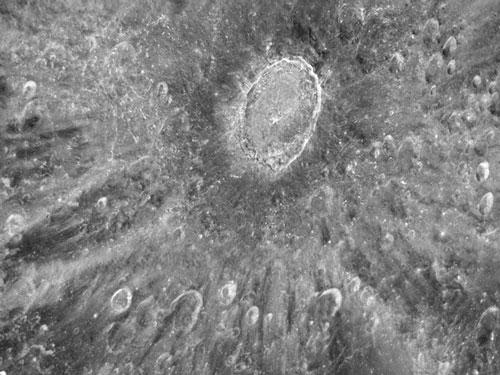Mottled landscape showing the impact crater Tycho is among the most violent-looking places on our moon. Astronomers didn’t aim NASA’s Hubble Space Telescope to study Tycho, however. The image was taken in preparation to observe the transit of Venus across the sun’s face on June 5-6.
Hubble cannot look at the sun directly, so astronomers are planning to point the telescope at the Earth’s moon, using it as a mirror to capture reflected sunlight and isolate the small fraction of the light that passes through Venus’s atmosphere. Imprinted on that small amount of light are the fingerprints of the planet’s atmospheric makeup.
This image, taken with Hubble’s Advanced Camera for Surveys, reveals lunar features as small as roughly 560 feet (170 m) across. The large “bulls-eye” near the top of the picture is the impact crater, caused by an asteroid strike about 100 million years ago. The bright trails radiating from the crater were formed by material ejected from the impact area during the asteroid collision. Tycho is about 50 miles (80 km) wide and is circled by a rim of material rising almost 3 miles (5 km) above the crater floor. The image measures 430 miles (700 km) across, which is slightly larger than New Mexico.

